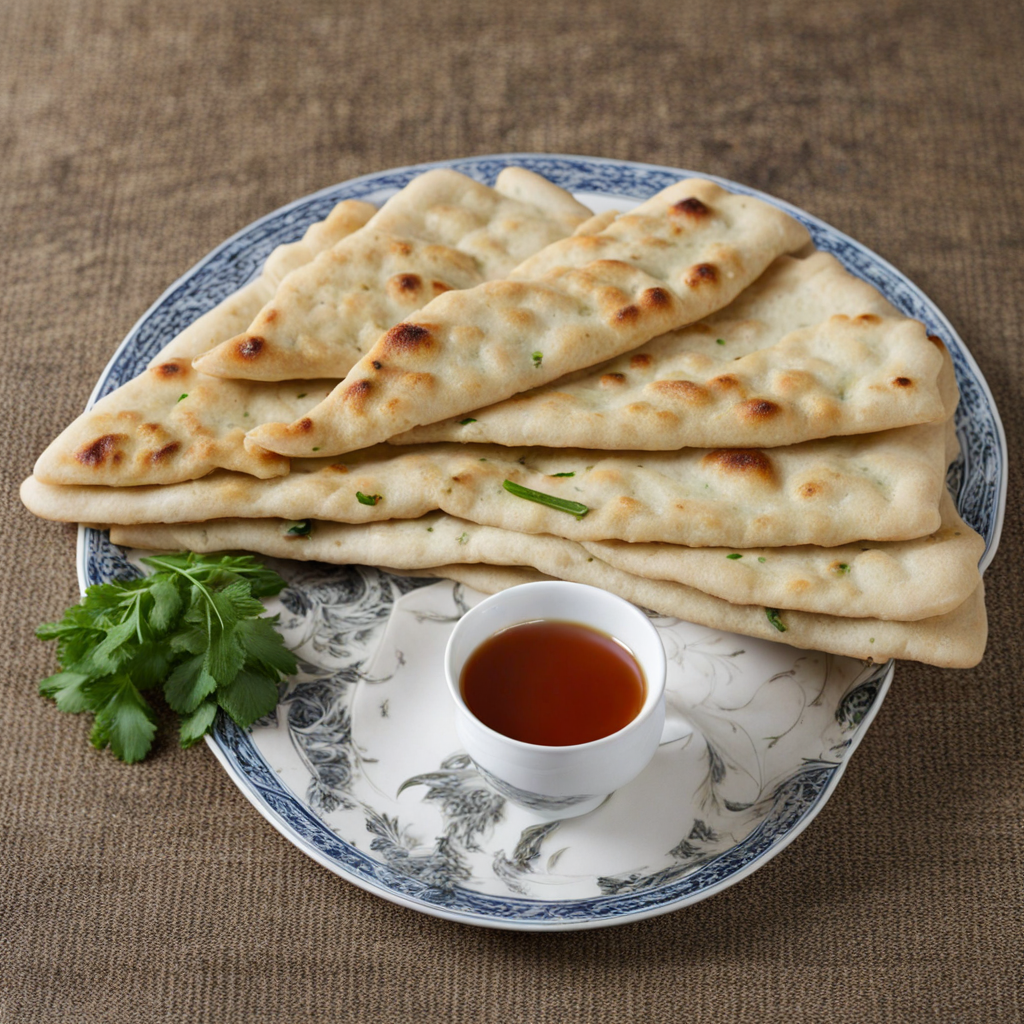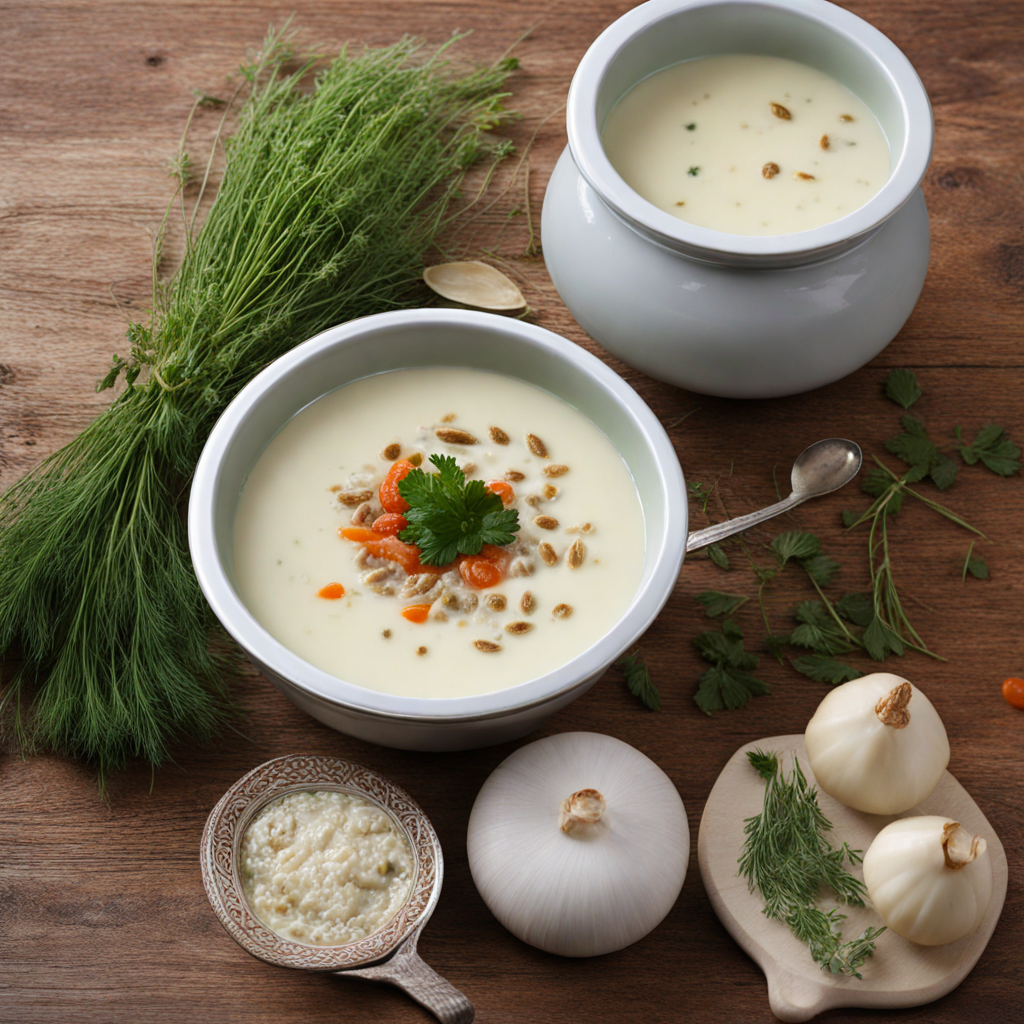Beshbarmak
Beshbarmak is a traditional dish that holds a special place in the hearts of Turkmen people, often served during significant celebrations and gatherings. The name "Beshbarmak" translates to "five fingers," which reflects the customary way of eating this dish: diners use their hands to enjoy the tender meat and noodles. The dish typically features boiled lamb or beef, which is cooked until it is incredibly tender and flavorful. This meat is then sliced into generous pieces and served atop a bed of wide, homemade noodles, which are often flavored with broth and a hint of seasoning to enhance their taste. Accompanying the meat and noodles is a savory broth made from the meat's cooking liquid, often enriched with onions for added depth and flavor. The broth is poured over the dish just before serving, adding moisture and richness that binds all the elements together. For an authentic experience, Beshbarmak is usually garnished with fresh herbs and served with a side of onion salad, which provides a refreshing contrast to the richness of the dish. The combination of textures and flavors creates a delightful balance that is both hearty and satisfying. The preparation of Beshbarmak is as much about the communal experience as it is about the food itself. It is often enjoyed during family gatherings or special occasions, bringing people together to share in the joy of a meal. The dish embodies the hospitality of Turkmen culture, showcasing the importance of sharing and togetherness. As you savor each bite, you'll not only discover a unique taste but also a connection to the traditions and warmth of Turkmenistan's culinary heritage.
How It Became This Dish
Бешбармак: A Culinary Journey Through Turkmenistan’s Heart #### Origins and Historical Context Бешбармак, translating to "five fingers," is a traditional dish that holds a cherished place in the culinary landscape of Turkmenistan, as well as in the broader cultural practices of Central Asia. Its origins can be traced back to the nomadic tribes that roamed the steppes of this region, where the harsh climate and the need for a portable, nourishing meal led to the development of simple yet hearty foods. The dish is primarily made from boiled meat—typically lamb or beef—served over a bed of wide, flat noodles, and accompanied by a savory broth. The name itself reflects the traditional way of eating this dish; it is customarily consumed with the hands, thus emphasizing the communal and social aspects of dining within Turkmen culture. Historically, Бешбармак is not merely a meal but a significant part of Turkmen hospitality. In ancient times, it was served during festivities, special occasions, and gatherings, symbolizing generosity and respect for guests. The preparation of Бешбармак often involved entire families, with each member playing a role in its making, from slaughtering the animal to hand-rolling the dough for the noodles. This communal effort further highlights the dish's cultural significance. #### Cultural Significance In Turkmen society, Бешбармак is more than just food; it embodies the spirit of Turkmen hospitality and the communal values that define its people. The act of sharing Бешбармак is a ritual that reinforces social bonds, whether among family members or within the community. It is often served during weddings, funerals, and other significant rituals, where the dish acts as a bridge between generations, connecting the past with the present. The preparation of Бешбармак is steeped in tradition. The meat is often boiled with various spices and served alongside a clear broth. The noodles are typically made from simple ingredients like flour, water, and salt, yet the skill involved in their preparation is a point of pride among Turkmen women, who often pass down their techniques through generations. In addition to its culinary significance, Бешбармак is also a reflection of Turkmen identity. The dish showcases the importance of livestock in Turkmen culture, where sheep and horses are not only sources of sustenance but also symbols of wealth and status. The preparation and consumption of Бешбармак thus embody the values of sustenance, community, and tradition that are central to Turkmen life. #### Development Over Time As Turkmenistan evolved through various historical phases—from nomadic tribes to a Soviet Republic and eventually to an independent nation—the dish of Бешбармак adapted while retaining its core essence. During the Soviet era, Turkmen cuisine, including Бешбармак, experienced a degree of homogenization as the government sought to standardize food practices across the diverse ethnic groups within the USSR. However, local culinary traditions were resilient. Despite the influx of new ingredients and cooking methods, the traditional preparation of Бешбармак remained largely unchanged. The post-independence era of the 1990s marked a renaissance of Turkmen culture, including its culinary heritage. With newfound national pride, there was a revival of traditional dishes, and Бешбармак emerged as a culinary symbol of Turkmen identity. Chefs and home cooks alike began to celebrate the dish, often incorporating regional variations while adhering to the traditional methods of preparation. Today, Бешбармак is not only enjoyed in homes across Turkmenistan, but it has also gained recognition at international culinary festivals, showcasing the rich flavors and cultural stories behind the dish. Turkmen chefs have begun experimenting with modern twists on Бешбармак, introducing new ingredients while still respecting its traditional roots. For instance, some chefs might incorporate fresh herbs or spices not traditionally used in the dish, reflecting a broader global culinary influence while maintaining the fundamental aspects of Бешбармак. #### Conclusion Бешбармак remains a vital part of Turkmenistan’s cultural fabric, embodying the history, values, and identity of the Turkmen people. From its ancient nomadic origins to its contemporary iterations, the dish has evolved while retaining its significance as a symbol of hospitality, community, and tradition. Whether served at a festive gathering or enjoyed in the warmth of a family meal, Бешбармак continues to resonate with the spirit of Turkmenistan. As globalization and modernization influence culinary practices worldwide, the resilience of traditional dishes like Бешбармак underscores the importance of preserving cultural heritage and celebrating the unique stories that food can tell. In a world increasingly drawn toward fast food and convenience, Бешбармак serves as a reminder of the beauty of patience, care, and the communal act of sharing a meal—a timeless culinary tradition that transcends generations and unites people at the table.
You may like
Discover local flavors from Turkmenistan







